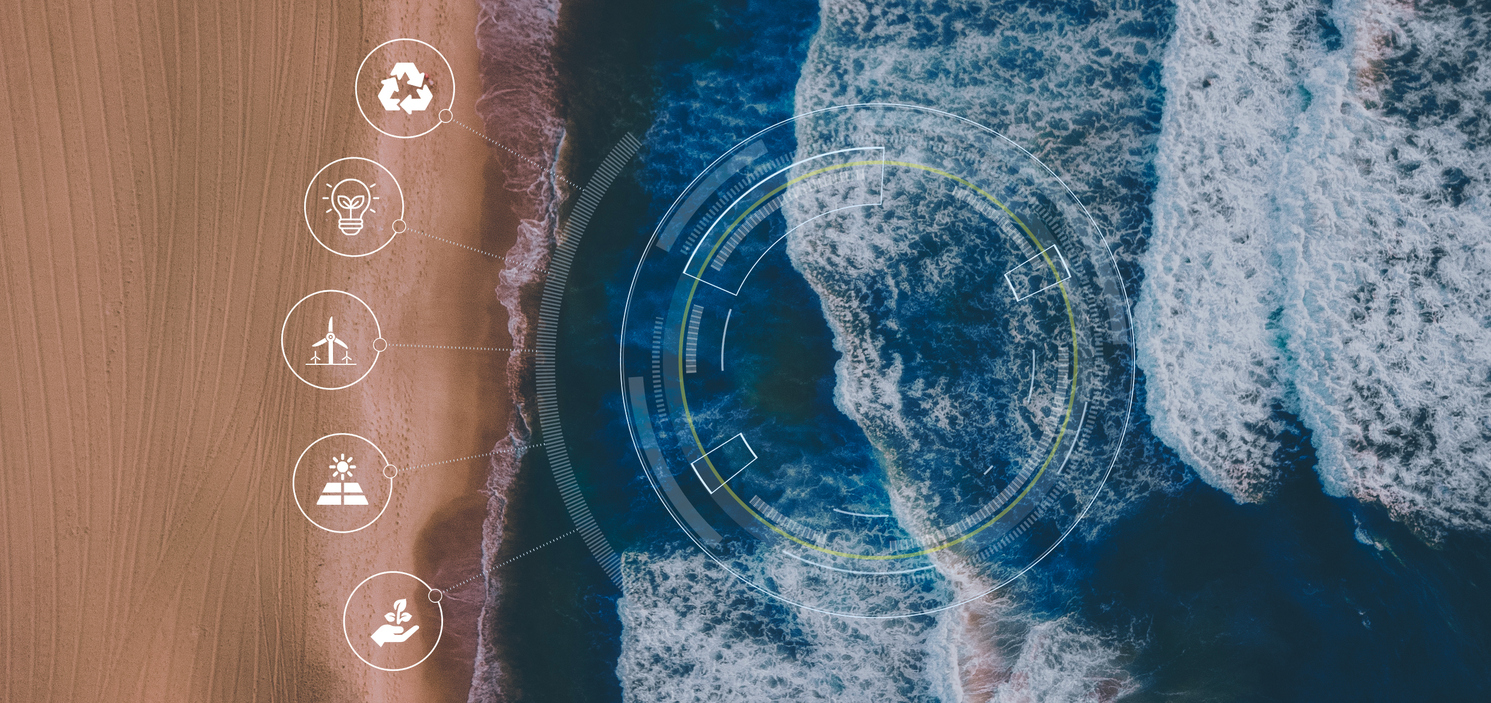2. May 2023
Reading Time: 5
Min.
news
ESRS E3 – Water and marine resources
The E3 standard is one of 5 environment-specific standards of the European Sustainability Reporting Standards. The standards were developed by EFRAG and are to be applied in accordance with the CSRD. This article is based on the final delegated regulation on the ESRS (European Sustainability Reporting Standards), which was published in the Official Journal of the EU on 22nd December 2023. Here you can find a general overview of the ESRS.
The ESRS E3 defines the disclosures to be made regarding water and marine resources, focusing in particular on the company’s relationship with water and marine resources in its own operations and in the upstream and downstream value chain. In the context of water, meaning surface water, groundwater as well as produced water, the aim is to communicate where and how much water is used for the company’s activities, products and services and what water-related impacts and risks the company causes or is exposed to. Regarding marine resources, the use of marine resources, discharges and emissions entering the oceans and, in general, activities in maritime areas are addressed. The company should report on all measures and their results to protect water and marine resources and reduce water consumption. In addition, the company’s plans and capacities to adapt and align its strategy, business models and operations with the preservation and restoration of water and marine resources on a global scale should also be disclosed.
Interactions with other ESRS
Because water and marine resources is an extremely wide-ranging topic, there are various interactions with other Standards, particularly with other environmental topics such as climate change (ESRS E1), pollution (ESRS E2), biodiversity and ecosystems (ESRS E4), and circular economy and resource use (ESRS E5).
The ESRS E3 defines the disclosures to be made regarding water and marine resources, focusing in particular on the company’s relationship with water and marine resources in its own operations and in the upstream and downstream value chain. In the context of water, meaning surface water, groundwater as well as produced water, the aim is to communicate where and how much water is used for the company’s activities, products and services and what water-related impacts and risks the company causes or is exposed to. Regarding marine resources, the use of marine resources, discharges and emissions entering the oceans and, in general, activities in maritime areas are addressed. The company should report on all measures and their results to protect water and marine resources and reduce water consumption. In addition, the company’s plans and capacities to adapt and align its strategy, business models and operations with the preservation and restoration of water and marine resources on a global scale should also be disclosed.
There are also interactions with ESRS S3 (affected communities) concerning the issue around water and marine resources in regard to the negative impacts on affected communities.
Disclosure Requirements according to ESRS E3
The E3 standard includes 5 environmental disclosure requirements (E3-1 to E3-5) as well as a requirement from ESRS 2 (ESRS 2 IRO-1). As an overview, these are listed in Table 1 and are described in the following.
| 1 | Disclosure Requirement related to ESRS 2 IRO-1 | Description of the processes to identify and assess material water and marine resources-related impacts, risks and opportunities |
| 2 | Disclosure Requirement E3-1 | Policies related to water and marine resources |
| 3 | Disclosure Requirement E3-2 | Actions and resources related to water and marine resources |
| 4 | Disclosure Requirement E3-3 | Targets related to water and marine resources |
| 5 | Disclosure Requirement E3-4 | Water consumption |
| 6 | Disclosure Requirement E3-5 | Anticipated Potential financial effects from material water and marine resources-related risks and opportunities |
1. Disclosure Requirement related to ESRS 2 IRO-1 – Description of the processes to identify and assess material water and marine resources-related impacts, risks and opportunities
The entity should describe the procedures used to identify and assess the material impacts, risks, and opportunities associated with water and marine resources.
2. Disclosure Requirement E3-1 – Policies related to water and marine resources
The company shall describe implemented policies for managing the material impacts, risks and opportunities related to water and marine resources. In particular, it shall address whether and how the company’s policies address the issues of water management, product and service design, and the commitment to reduce water consumption in water vulnerable areas in its own operations and along the upstream and downstream value chain.
3. Disclosure Requirement E3-2 – Actions and resources related to water and marine resources
The company should report on the measures regarding water and marine resources and the resources allocated to them. The description of the measures and resources related to water and marine resources should follow the principles defined in ESRS 2 MDR-A. In addition to the description, the entity shall indicate whether an action and resources used can be linked to water and marine resource mitigation, water and marine resource reduction or restoration, regeneration, and transformation of marine ecosystems and basins.
4. Disclosure Requirement E3-3 – Targets related to water and marine resources
The entity should state the targets it has set in relation to water and marine resources, providing the information specified in ESRS 2 MDR-T in addition to the description of the targets. In addition, it shall also indicate, among other things, whether (local) ecological thresholds and organization-specific allocations have been taken into account in setting the targets.
5. Disclosure Requirement E3-4 – Water consumption
The company shall report information on water consumption in relation to the material impacts, risks and opportunities. In doing so, the company shall report, among other things, the following:
- total water consumption in m3
- total water consumption in m3 in areas with significant water risk or water stress
- information on the total amount of water reused and recycled
- water intensity (total water consumption in m3 / net revenue on own operations).
6. Disclosure Requirement E3-5 –Anticipated financial effects from material water and marine resources-related risks and opportunities
The entity should report potential financial effects (positive and negative) of material risks and opportunities arising from impacts related to water and marine resources. This shall include, as far as practicable, a quantification of the potential financial effects in monetary terms.






